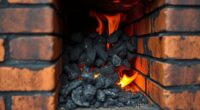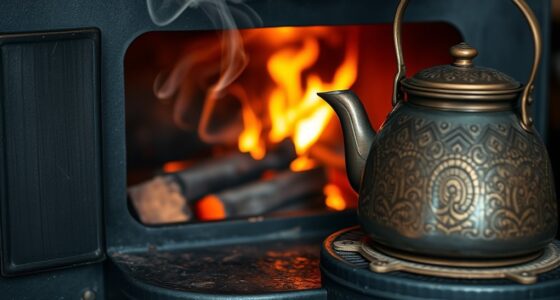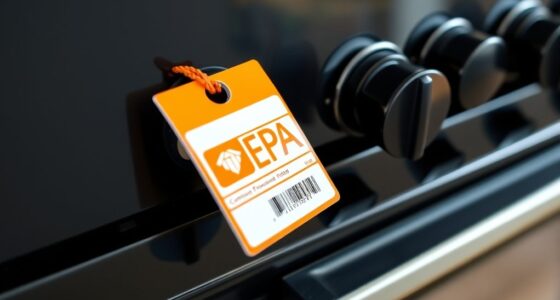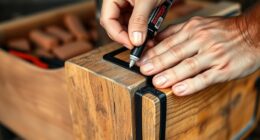When you own a wood stove, it’s important to review your home insurance policy to make certain you’re covered for fire damages. Most policies include fire protection, but you may need to confirm that your stove and safety measures are explicitly covered. Proper installation, maintenance, and safety practices can help prevent fire risks and keep your coverage intact. To learn more about what you should do to protect your home and insurance, keep exploring your options.
Key Takeaways
- Check if your home insurance policy explicitly covers damages caused by wood stove fires or requires endorsements.
- Ensure proper installation, maintenance, and safety measures to prevent fire risks and maintain coverage.
- Install smoke and carbon monoxide detectors to enhance safety and potentially influence insurance premiums.
- Schedule regular chimney inspections and repairs to reduce creosote buildup and fire hazards.
- Consult your insurer about any necessary safety precautions or coverage adjustments specific to wood stove use.
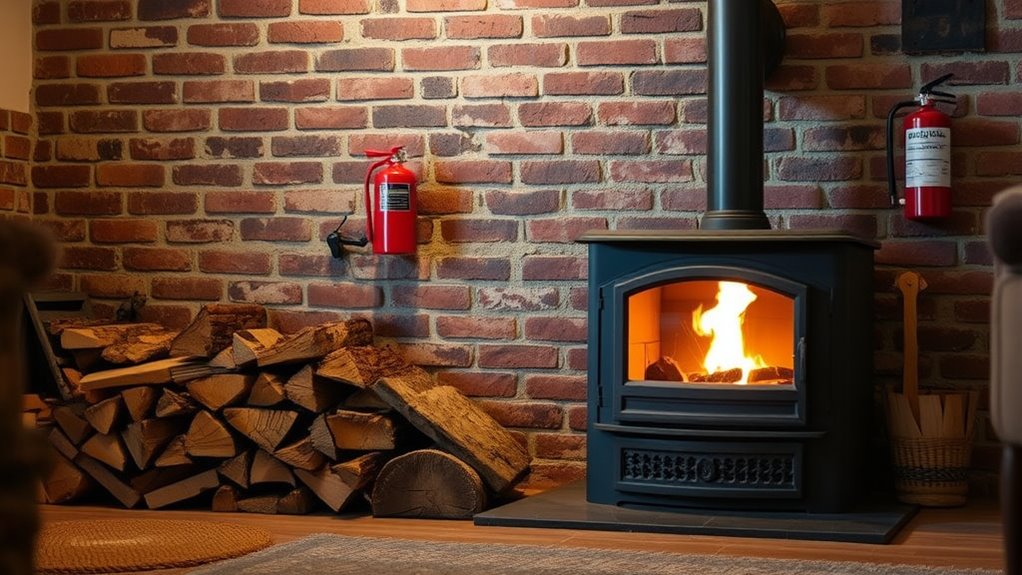
Are you a wood stove owner wondering if your home insurance covers potential risks? It’s a common concern, especially since a wood stove adds charm and warmth but also introduces safety considerations. Understanding how fire insurance applies to wood stove use is essential to protect your home and belongings. Most standard home insurance policies include fire insurance, which covers damages caused by accidental fires. However, when it comes to wood stoves, insurers often want to ensure you’re practicing proper stove safety to minimize risks. If you haven’t checked your policy details recently, it’s a good idea to review whether your coverage explicitly mentions wood stoves or similar heating appliances.
Many home insurance policies cover fire damage but check if wood stoves are explicitly included.
Stove safety is a critical factor insurers consider because improper installation, maintenance, or usage can lead to fires. Many policies require you to follow safety guidelines, such as having your stove installed by a professional, ensuring proper clearance from combustible materials, and installing smoke and carbon monoxide detectors in your home. Failure to adhere to these safety practices could jeopardize your coverage or even void your policy in the event of a fire caused by negligence. That’s why it’s wise to familiarize yourself with fire safety protocols and regularly inspect your stove and chimney for creosote buildup, cracks, or other hazards.
Insurers might also require you to carry additional coverage or endorsements specific to wood stoves, especially if the stove is a high-capacity or antique model. Some policies exclude damages caused by wood stoves unless you’ve taken specific precautions. To avoid surprises, consider consulting your insurer about your stove safety measures and whether you need to update your policy to explicitly include coverage for your heating appliance. Installing a fire-resistant hearth pad and ensuring proper ventilation not only enhances stove safety but can also demonstrate your commitment to preventing fires, possibly reducing your premiums.
In some cases, your home insurance provider may conduct inspections to verify that your stove is installed correctly and that safety measures are in place. If issues are found, they might require you to make repairs or upgrades before maintaining full coverage. Additionally, proper maintenance of your stove and chimney is essential, as neglect can lead to dangerous buildup and increase fire risk. Remember, a proactive approach to stove safety and understanding your fire insurance coverage helps you reduce risks and protects your home investment. Proper installation, routine maintenance, and adherence to safety standards are your best defenses against fire hazards. By keeping your stove safe and ensuring your insurance policy reflects your setup, you gain peace of mind knowing you’re prepared for potential risks associated with your wood stove.
Frequently Asked Questions
Do I Need Special Coverage for a Wood Stove Fire?
You likely need special coverage for a wood stove fire to protect against potential damage and insurance claims. Make certain you have proper fire prevention measures in place, like regular chimney cleaning and smoke alarms, to minimize risks. Check with your insurer to confirm if your current policy covers wood stove-related incidents or if you need additional coverage. Taking these steps helps safeguard your home and simplifies the claims process if an incident occurs.
Are There Discounts for Installing a New Wood Stove?
Did you know that many utility companies offer up to 30% in wood stove rebates and installation incentives? You can often qualify for discounts when installing a new wood stove, reducing your overall costs. Check with your local utility or government programs; they frequently provide these incentives to promote energy efficiency. Taking advantage of these offers can make upgrading your stove more affordable while ensuring your insurance coverage stays up to date.
How Does My Wood Stove Type Affect My Premium?
Your wood stove type impacts your insurance premiums because different wood stove types, like EPA-certified models versus older, non-certified ones, carry varying risks. More efficient, safer models often lead to lower premiums, while outdated or unsafe stoves might increase your costs. Always disclose your stove type accurately, and consider upgrading to safer, modern models to potentially lower your insurance premiums and reduce fire risk.
What Safety Features Can Lower My Insurance Costs?
Installing safety features like smoke detectors and scheduling regular chimney inspections can lower your insurance costs. Smoke detectors alert you to fires early, reducing damage and risk, while chimney inspections guarantee your stove operates safely, preventing potential fires. Insurance companies view these precautions positively, often offering discounts. Keep your home safe by maintaining these features, and you’ll likely see a reduction in your premium while protecting your loved ones.
Does My Homeowner’s Policy Cover Chimney Damage?
Ironically, your homeowner’s policy might not fully cover chimney damage unless you’ve had regular chimney inspections. Many insurers exclude damage caused by neglect or lack of maintenance. To guarantee fire damage coverage applies, schedule routine inspections and keep records. Don’t assume your policy covers everything—check the fine print, and consider adding specific coverage for chimney repairs to avoid surprises if a fire or damage occurs.
Conclusion
Don’t delay in dental your deductible and discuss your desires with your insurer. Diligently document your stove setup, stay safe, and stay insured. By understanding your coverage and taking proactive precautions, you protect your property and peace of mind. Remember, being prepared and proactive prevents problems and paves the way for a worry-free winter. So, stay savvy, stay secure, and enjoy your warm, worry-free wood stove experience!


